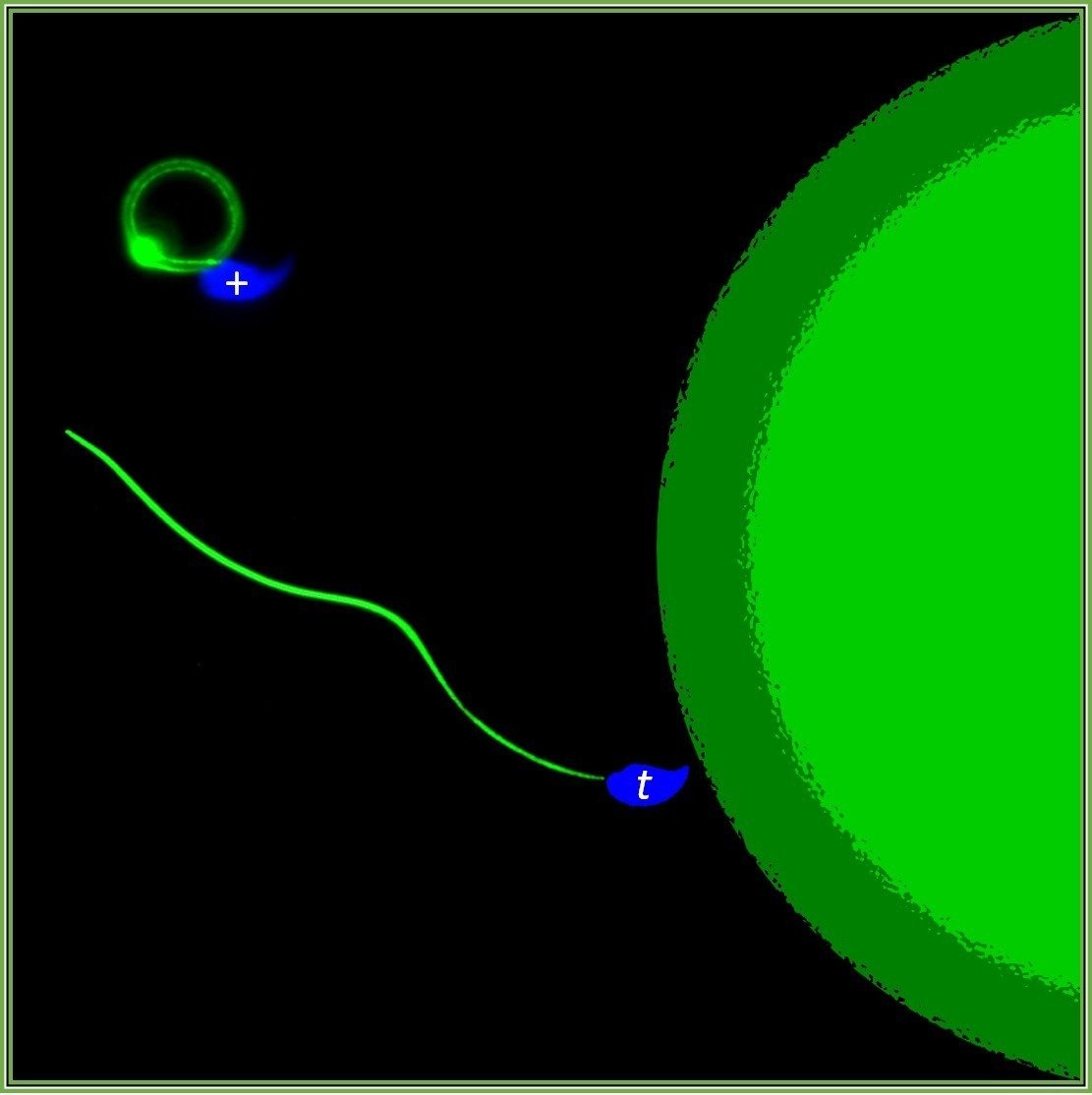Devious sperm 'poison' their rivals, forcing them to swim in circles until they die
Sperm are 'ruthless competitors' who aren't above poisoning their brothers.

Some sperm cells are ruthless manipulators that will literally poison their competition in the race to fertilize an egg, new research shows.
In a study published Feb. 4 in the journal PLOS Genetics, researchers from the Max Planck Institute for Molecular Genetics (MPIMG) in Berlin studied mouse sperm cells under the microscope to better understand the effects of a particular DNA sequence known as the t-haplotype. The team knew from previous research that sperm cells carrying this sequence tend to swim straighter (rather than in circles of death) and faster on average than competing sperm without it.
Now, they've found that those highly-effective sperms' tactics are a little less than sportsmanly.
Related: The 7 biggest mysteries of the human body
"Sperm with the t-haplotype manage to disable sperm without it," study co-author Bernhard Herrmann, director at the MPIMG, said in a statement. "The trick is that the t‑haplotype 'poisons' all sperm, but at the same time produces an antidote, which acts only in t-sperm [those with the t-haplotype] and protects them."
The result, Herrmann said, is sort of like a marathon "in which all the participants get poisoned drinking water," but only some of the runners have access to the antidote.
Nice sperm finish last
The t-haplotype is a series of linked genes occupying chromosome 17 in house mice all over the world. (Unlike humans, who have 23 pairs of chromosomes, mice have only 20). Herrmann and other researchers have called it a "selfish" gene — genetic material with a single mission: to make copies of itself. Because of the t-haplotype's ruthless effectiveness at passing from one generation to the next, according to the researchers, male mice carrying one copy of the t-haplotype will transmit it to up to 99% of their offspring.
Get the world’s most fascinating discoveries delivered straight to your inbox.
After studying more than 100 mouse sperm cells, Herrmann and his colleagues learned more about the selfish haplotype's devious tactics. They found that the t-haplotype "poisons" all sperm cells during the early phases of sperm production, injecting every cell with certain genes that inhibit their ability to regulate movement.
It's not until a later phase, when each cell divides in half, that the "antidote" comes into play. After dividing, half of the sperm cells inherit the t-haplotype genes on chromosome 17. For those lucky sperm, the t-haplotype provides new genetic variants that reverse the inhibiting effects of the "poison" that every cell consumed during the previous phase of development.
For the other half of sperm cells, which don't carry the t-haplotype or its genetic "antidote," life becomes a lot harder. These poisoned cells have a lot more trouble moving in a straight line (an important skill for a cell whose only job is to race full-speed-ahead to an unfertilized egg). In their study, the researchers saw that many sperm without the antidote literally swam in circles until they died, while their t-haplotype competitors charged straight ahead.
"Our data highlight the fact that sperm cells are ruthless competitors," Herrmann said. "Genetic differences can give individual sperm an advantage in the race for life, thus promoting the transmission of particular gene variants to the next generation."
Originally published on Live Science.

Brandon is the space / physics editor at Live Science. With more than 20 years of editorial experience, his writing has appeared in The Washington Post, Reader's Digest, CBS.com, the Richard Dawkins Foundation website and other outlets. He holds a bachelor's degree in creative writing from the University of Arizona, with minors in journalism and media arts. His interests include black holes, asteroids and comets, and the search for extraterrestrial life.



